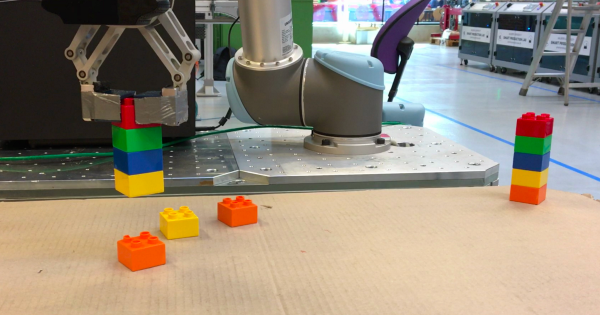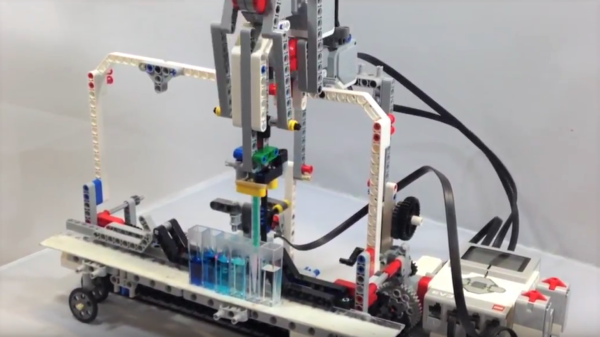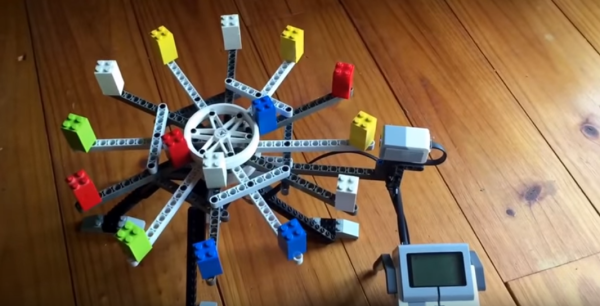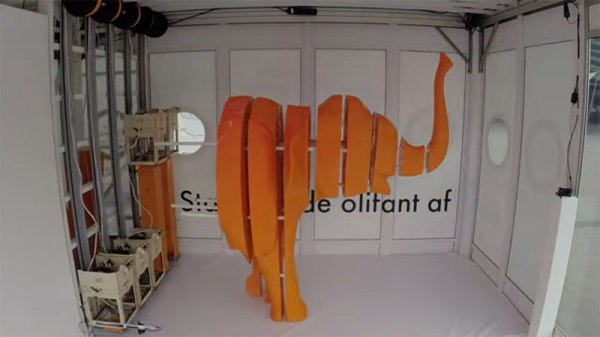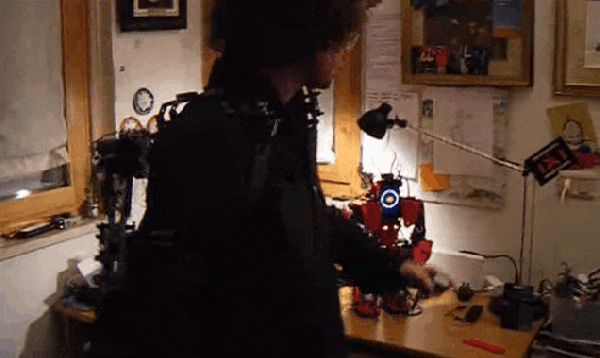[Yoshihito Isogawa] almost never employs non-LEGO parts in his creations. He created an excellent centrifugal pump out of 100% LEGO. While mostly a curiosity, you can definitely get a sense of how the mechanics work.
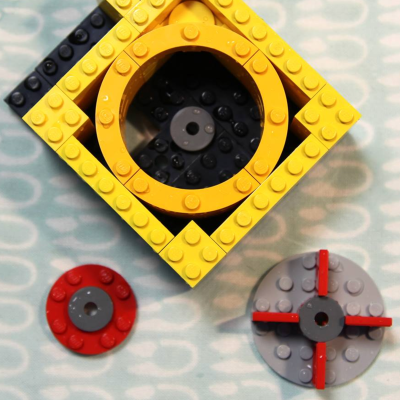 A Power Functions motor turns a 6×6 round plate that appears to have 1×2 smooth plates jammed between the studs, and secured with a 4×4 round plate on the other end. He geared up the motor so the assembly is spun very quickly, with those smooth plates forcing the water through a Technic mounting hole in one of the bricks.
A Power Functions motor turns a 6×6 round plate that appears to have 1×2 smooth plates jammed between the studs, and secured with a 4×4 round plate on the other end. He geared up the motor so the assembly is spun very quickly, with those smooth plates forcing the water through a Technic mounting hole in one of the bricks.
[Yoshihito] is known for his utterly elegant, stripped down mechanical assemblies—-check out his books if this is your bag. According to his bio he’s twice won the Japanese medal for best manual, so I guess he’s really good at explaining things! Also, that’s a thing?
For more DIY pump creation check out the air pump made out of a PVC pipe and the DIY syringe pump we published previously.


